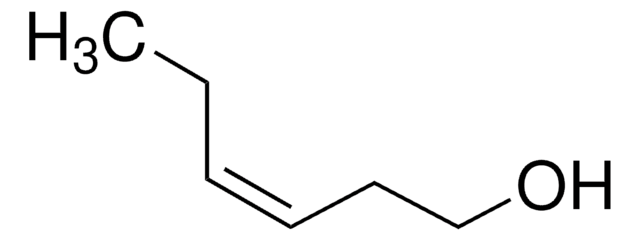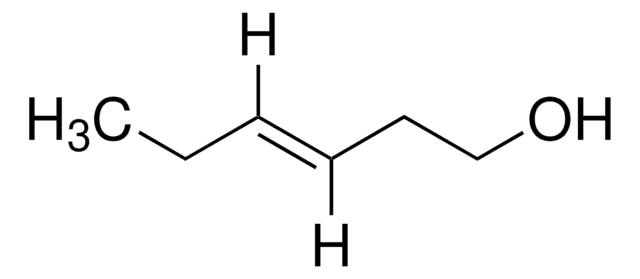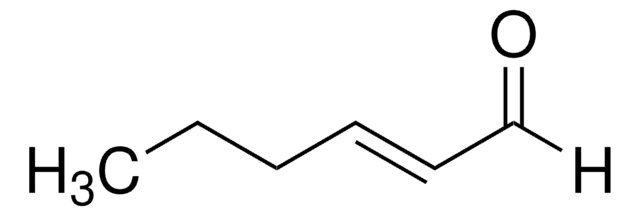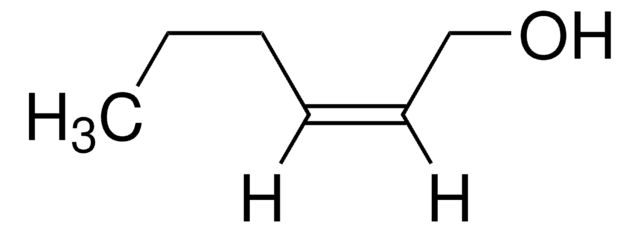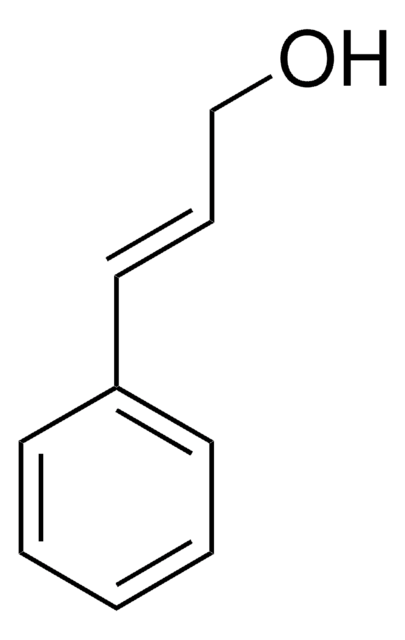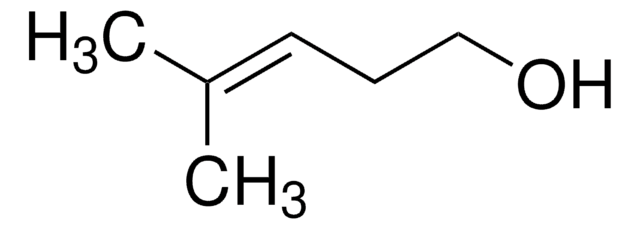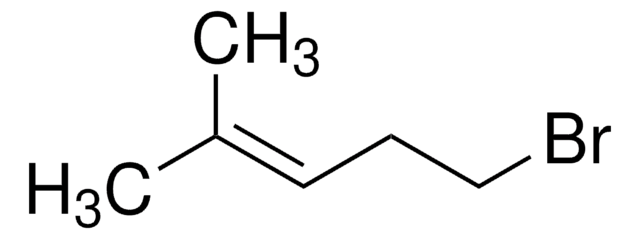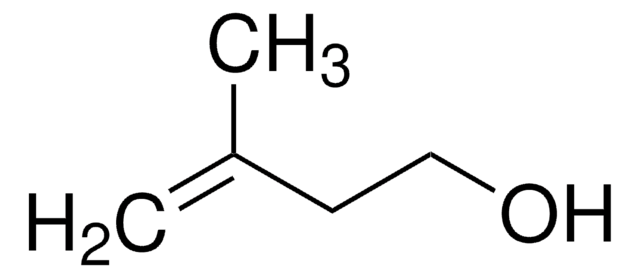Kluczowe dokumenty
224715
trans-3-Hexen-1-ol
97%
Synonim(y):
trans-3-Hexenol
About This Item
Polecane produkty
Poziom jakości
Próba
97%
współczynnik refrakcji
n20/D 1.439 (lit.)
bp
61-62 °C/12 mmHg (lit.)
gęstość
0.817 g/mL at 25 °C (lit.)
grupa funkcyjna
hydroxyl
ciąg SMILES
[H]\C(CC)=C(\[H])CCO
InChI
1S/C6H12O/c1-2-3-4-5-6-7/h3-4,7H,2,5-6H2,1H3/b4-3+
Klucz InChI
UFLHIIWVXFIJGU-ONEGZZNKSA-N
Szukasz podobnych produktów? Odwiedź Przewodnik dotyczący porównywania produktów
Opis ogólny
Hasło ostrzegawcze
Warning
Zwroty wskazujące rodzaj zagrożenia
Zwroty wskazujące środki ostrożności
Klasyfikacja zagrożeń
Eye Irrit. 2 - Flam. Liq. 3
Kod klasy składowania
3 - Flammable liquids
Klasa zagrożenia wodnego (WGK)
WGK 3
Temperatura zapłonu (°F)
138.2 °F - closed cup
Temperatura zapłonu (°C)
59 °C - closed cup
Środki ochrony indywidualnej
Eyeshields, Gloves, type ABEK (EN14387) respirator filter
Wybierz jedną z najnowszych wersji:
Masz już ten produkt?
Dokumenty związane z niedawno zakupionymi produktami zostały zamieszczone w Bibliotece dokumentów.
Klienci oglądali również te produkty
Nasz zespół naukowców ma doświadczenie we wszystkich obszarach badań, w tym w naukach przyrodniczych, materiałoznawstwie, syntezie chemicznej, chromatografii, analityce i wielu innych dziedzinach.
Skontaktuj się z zespołem ds. pomocy technicznej